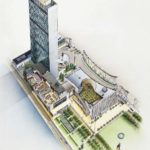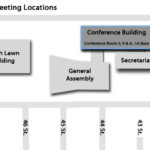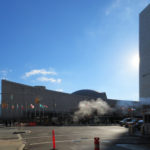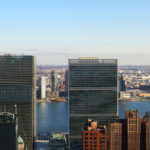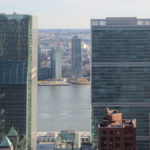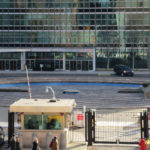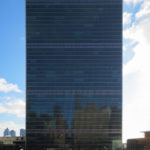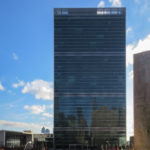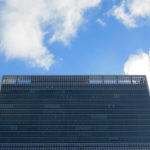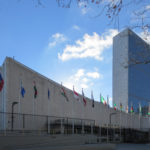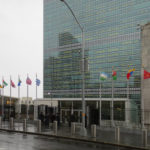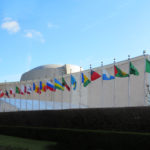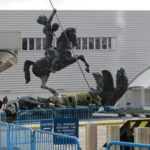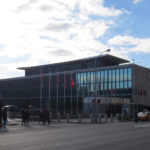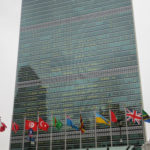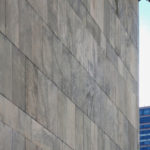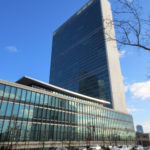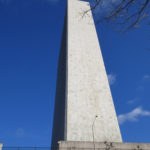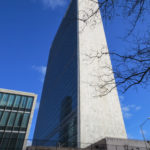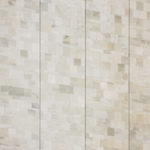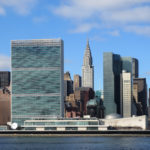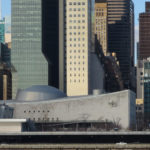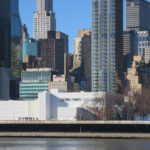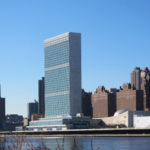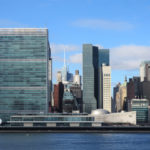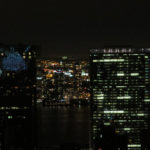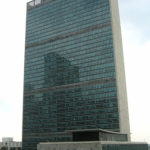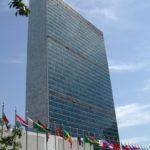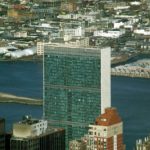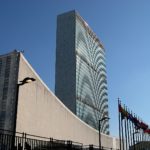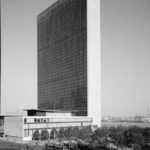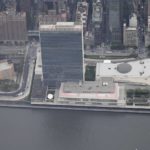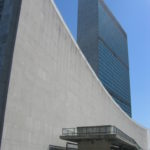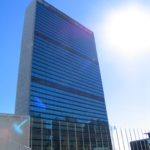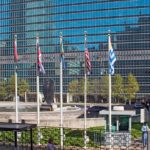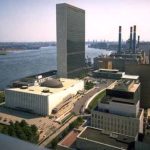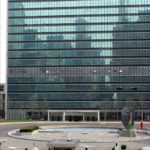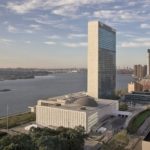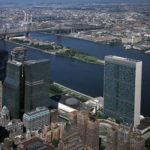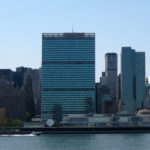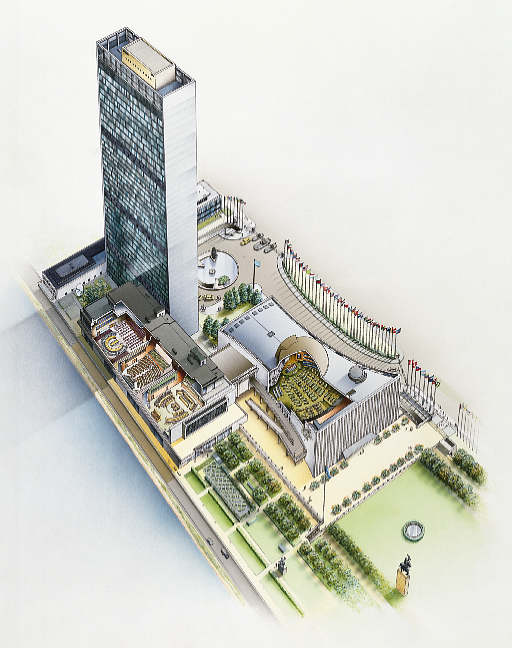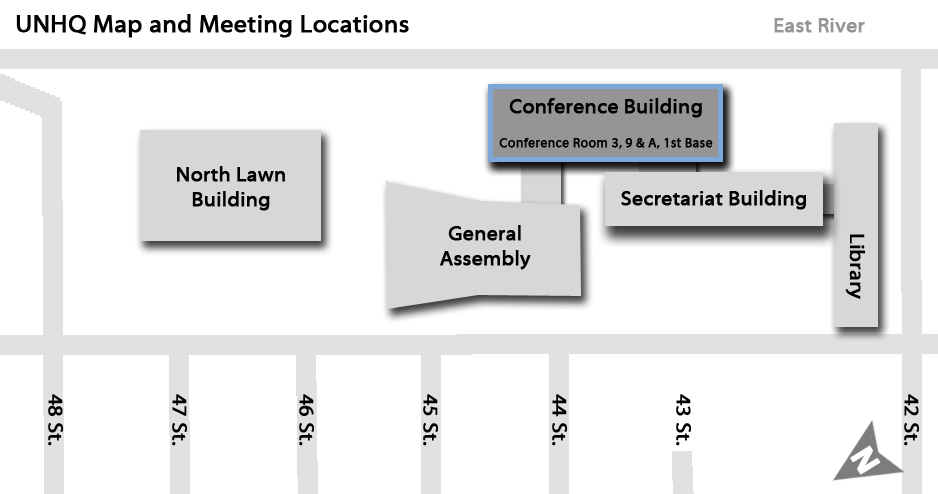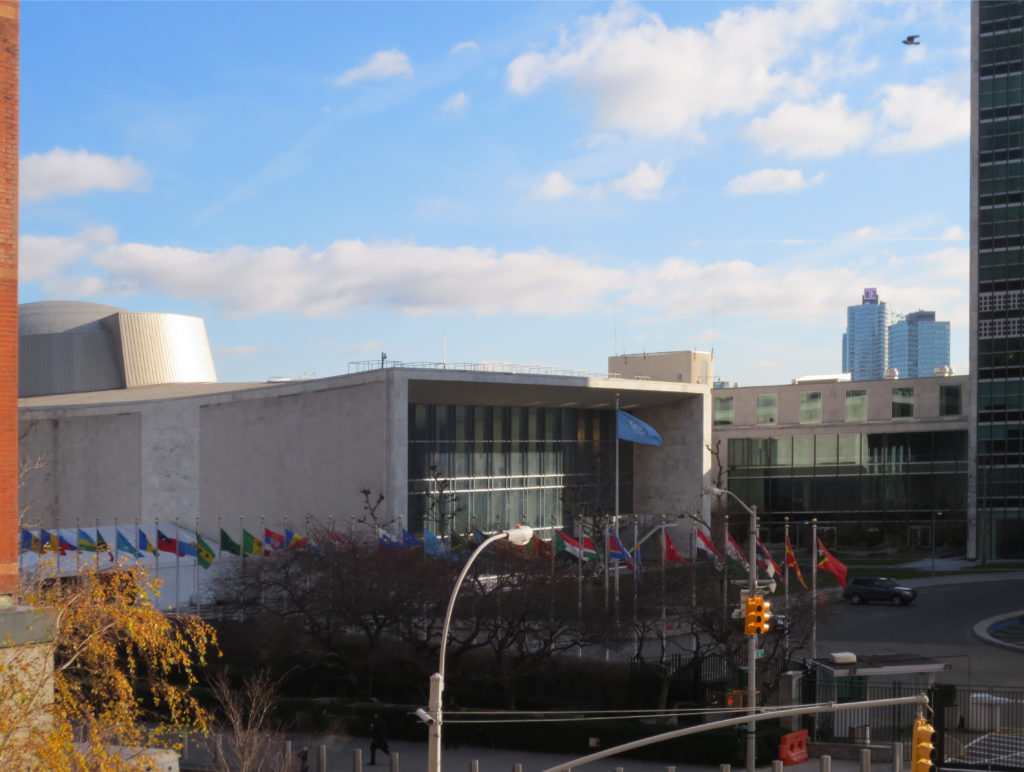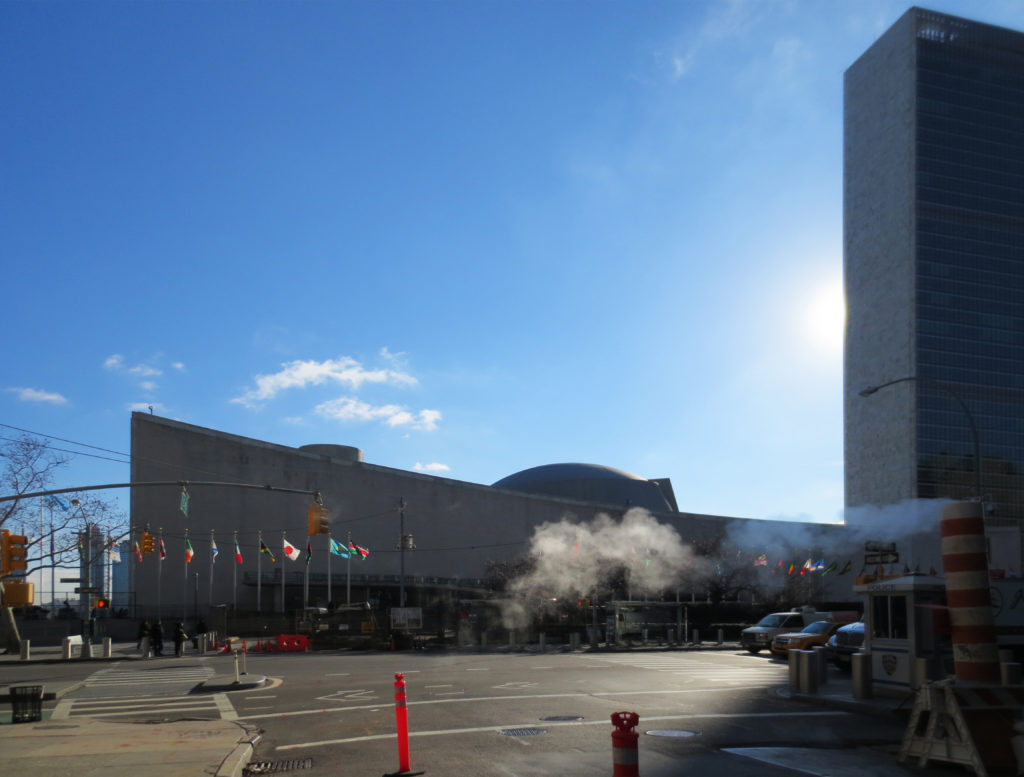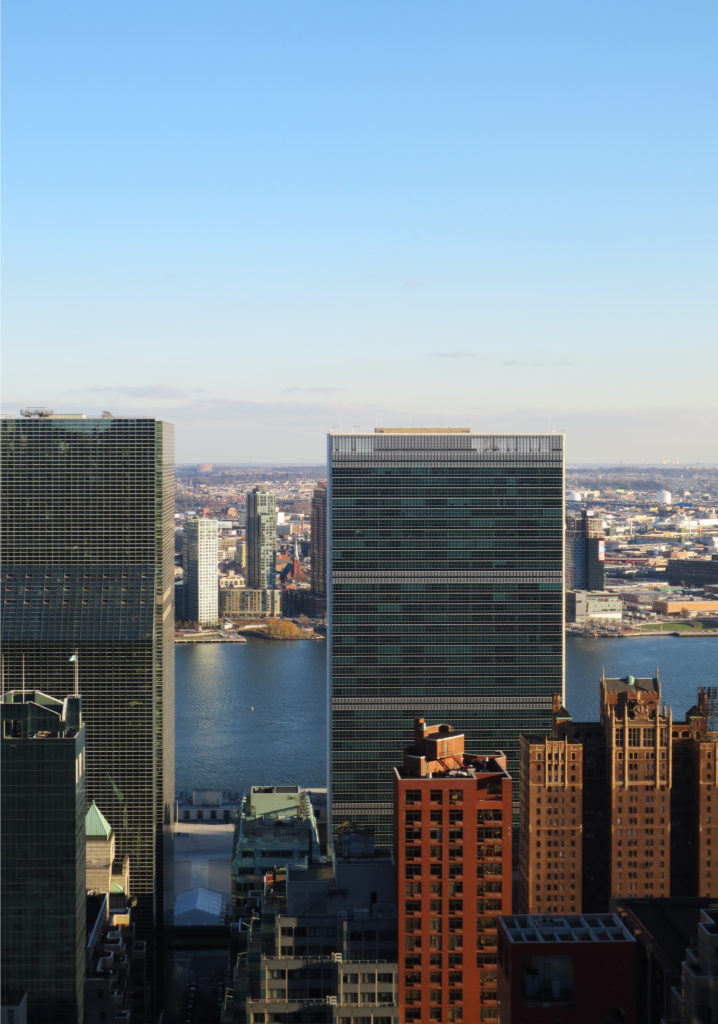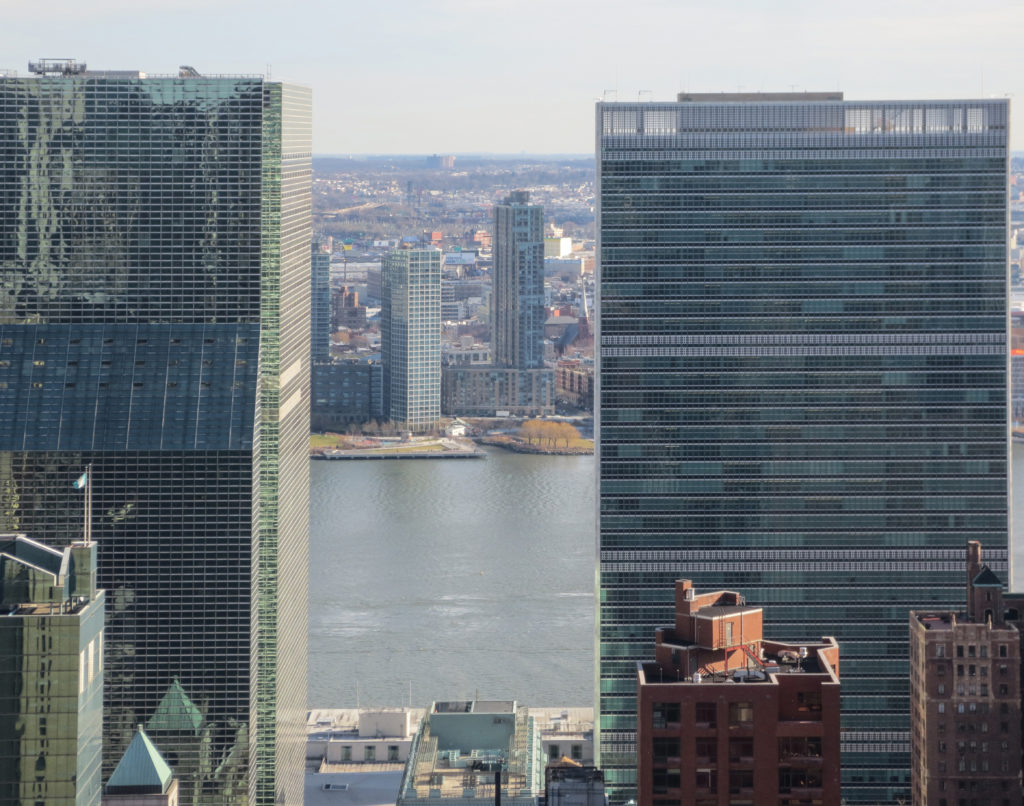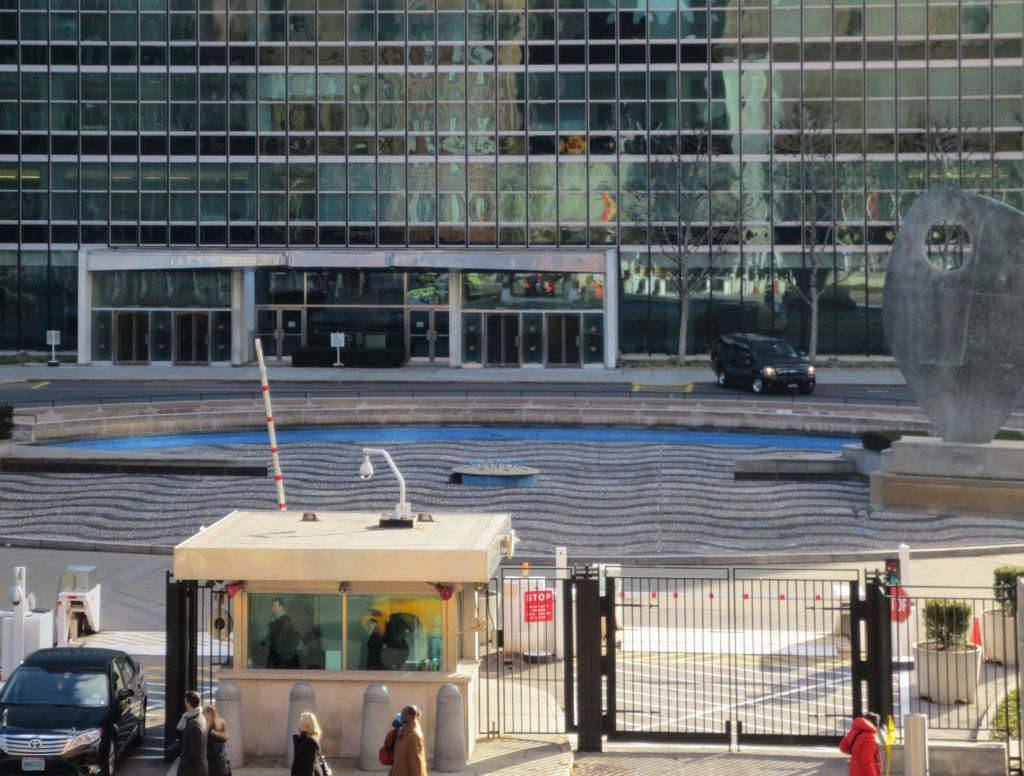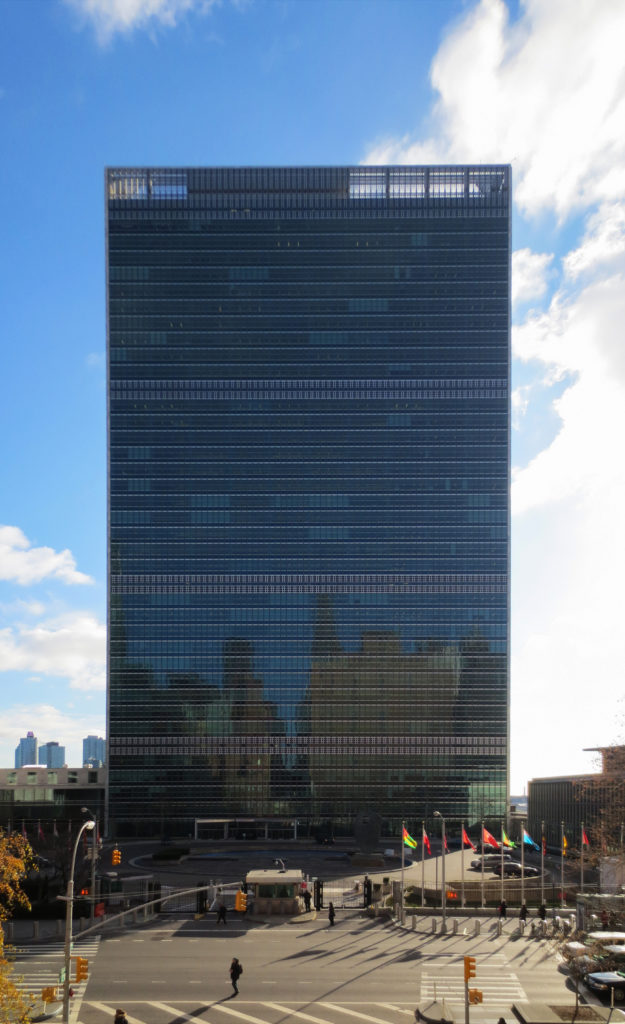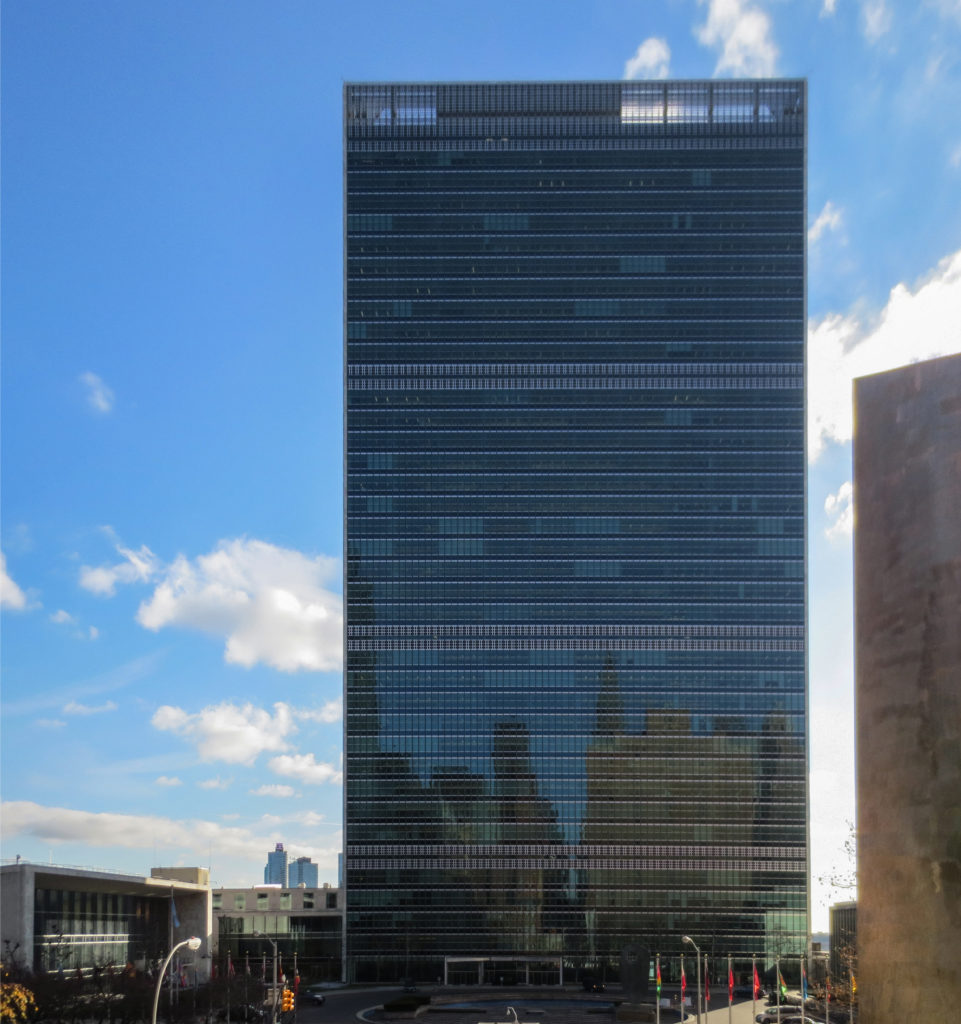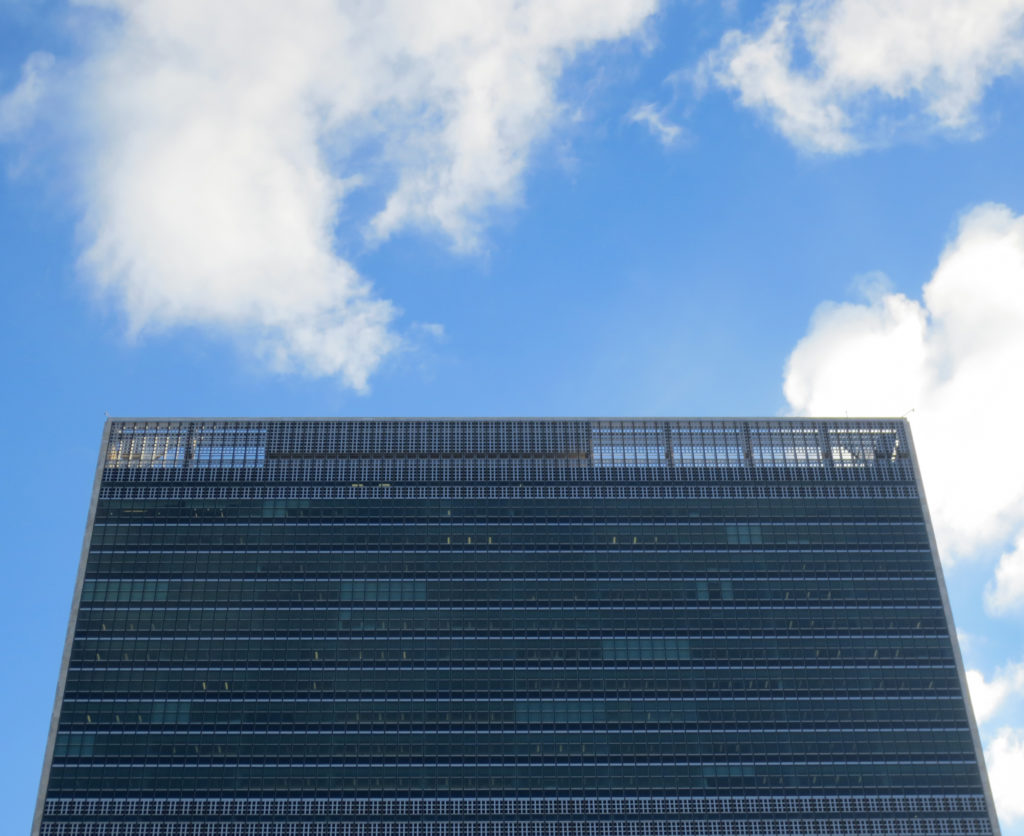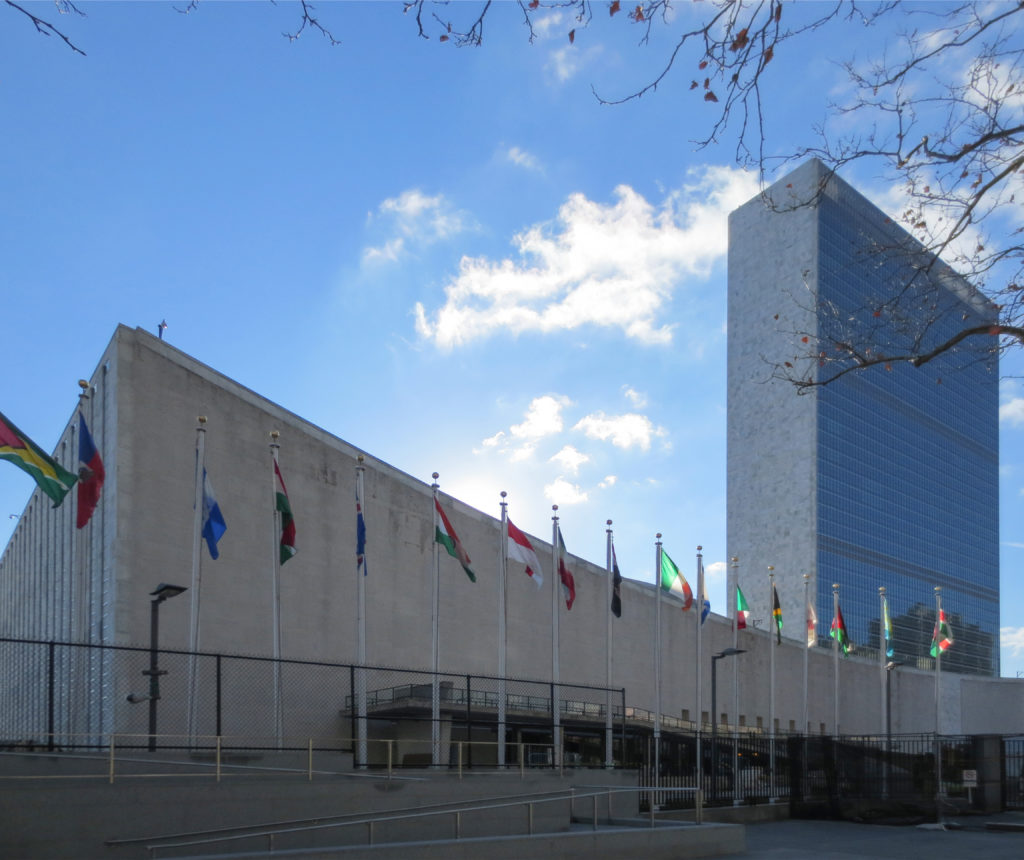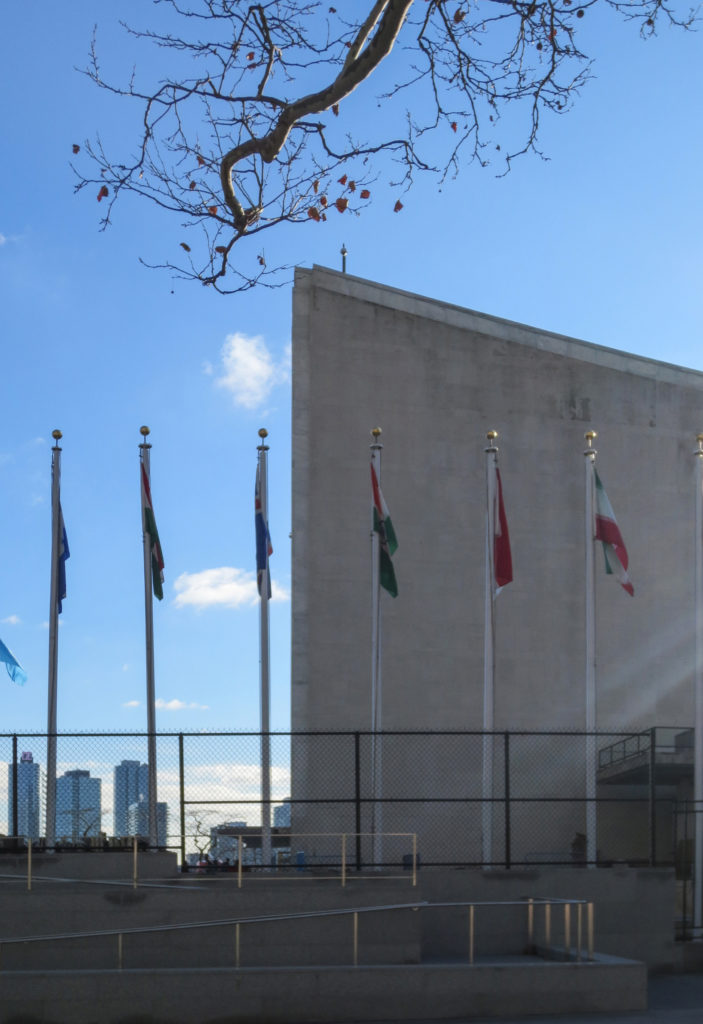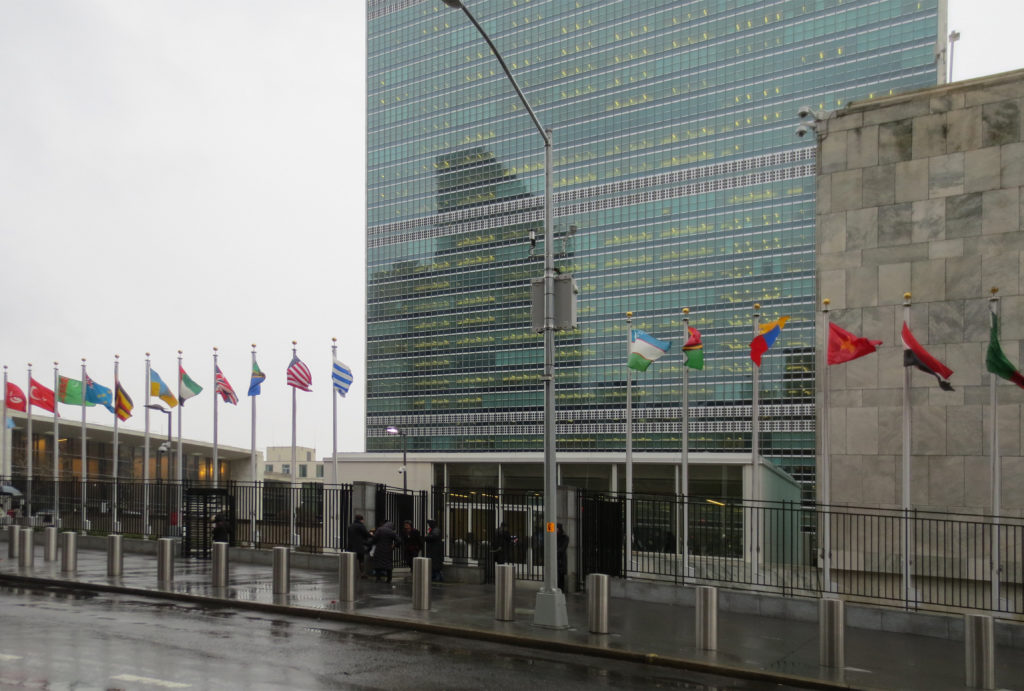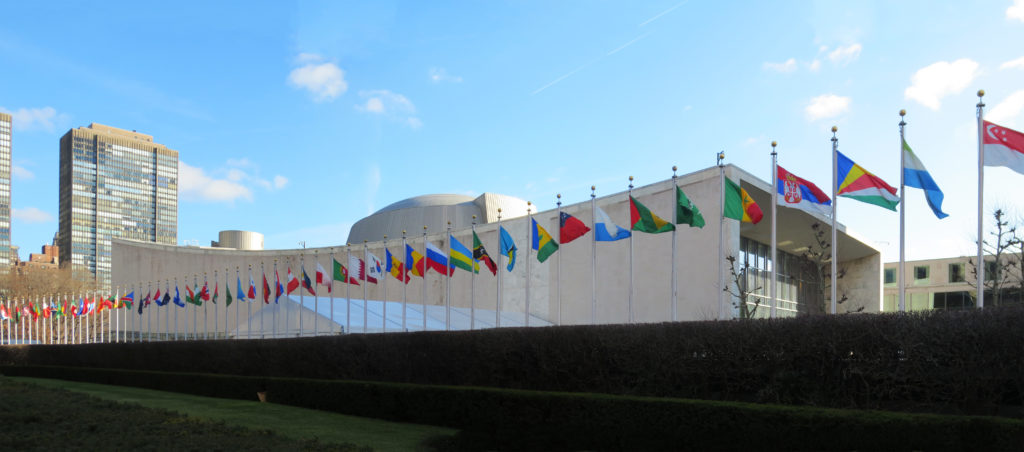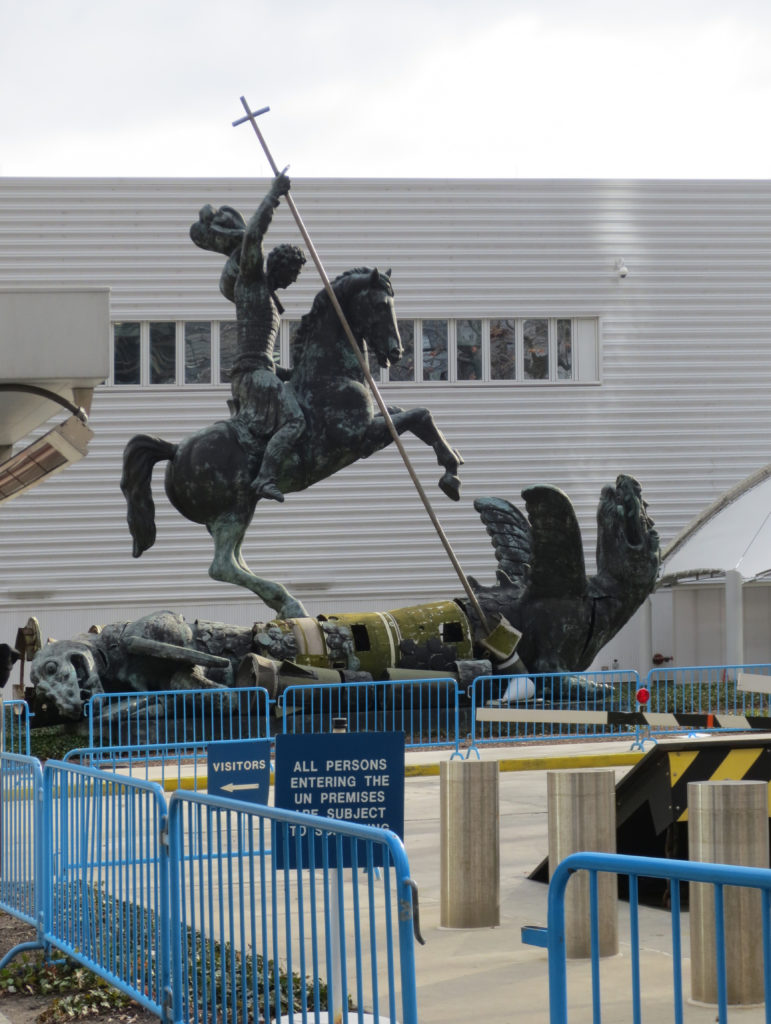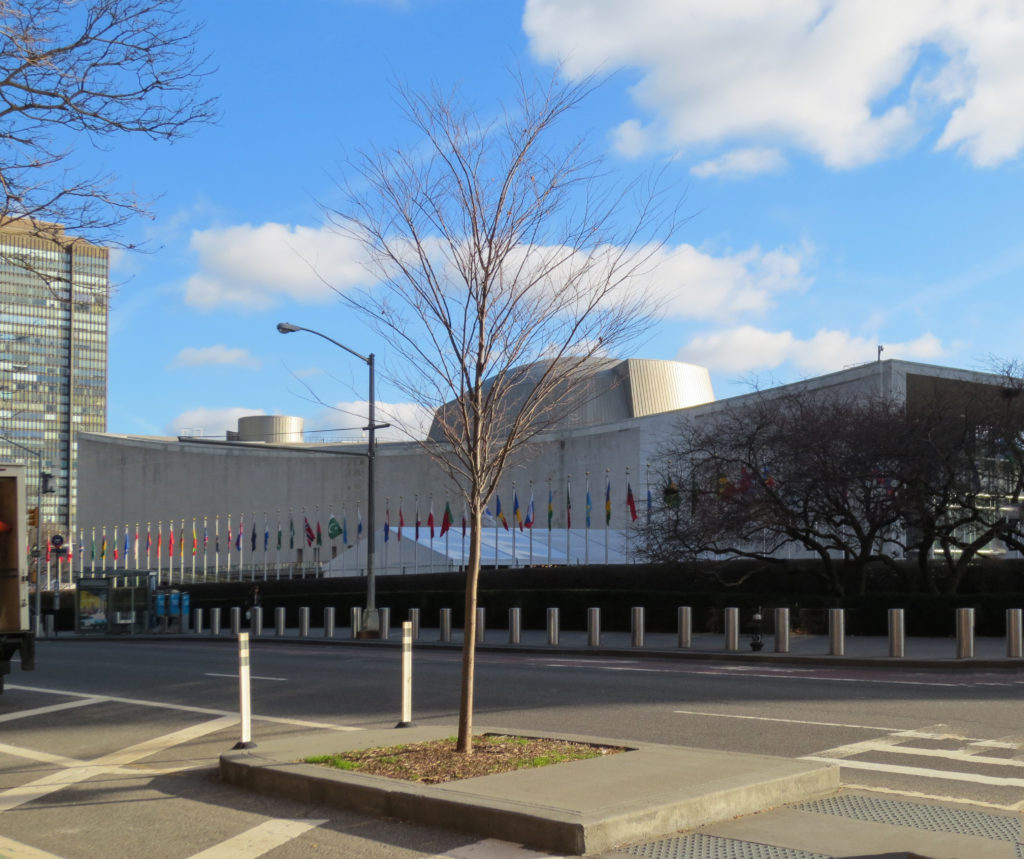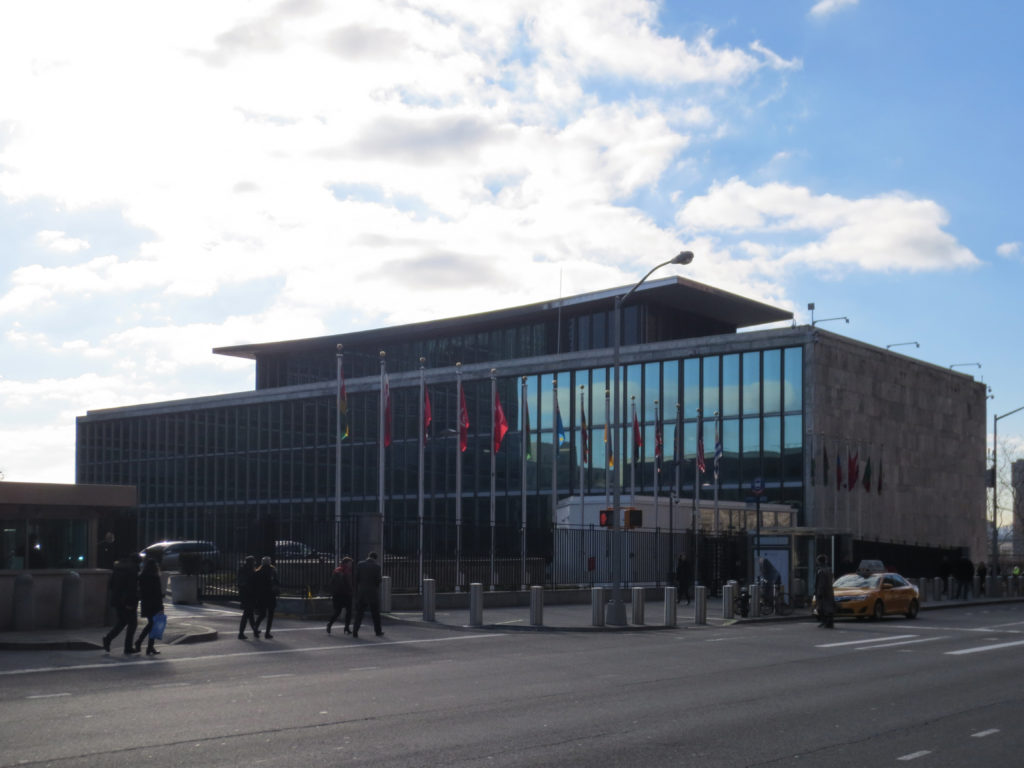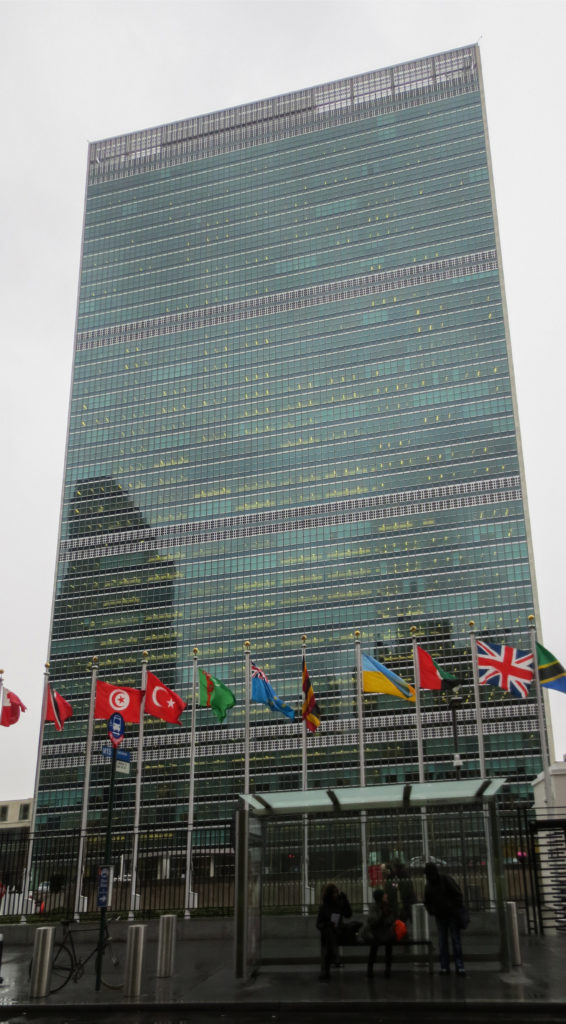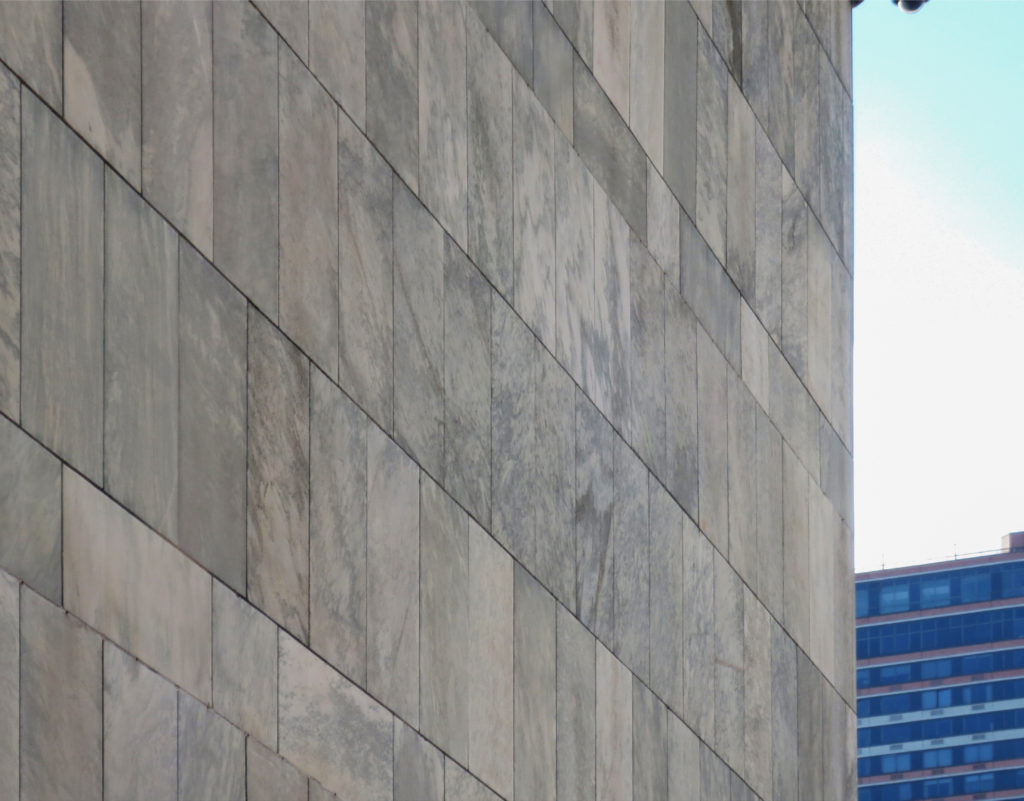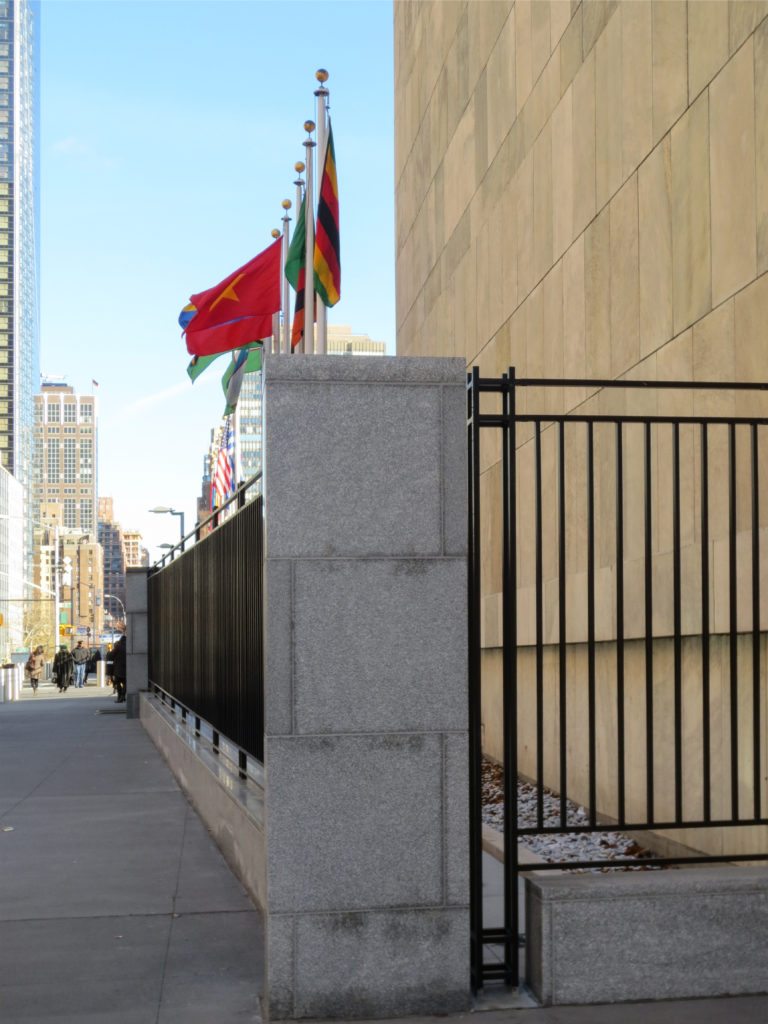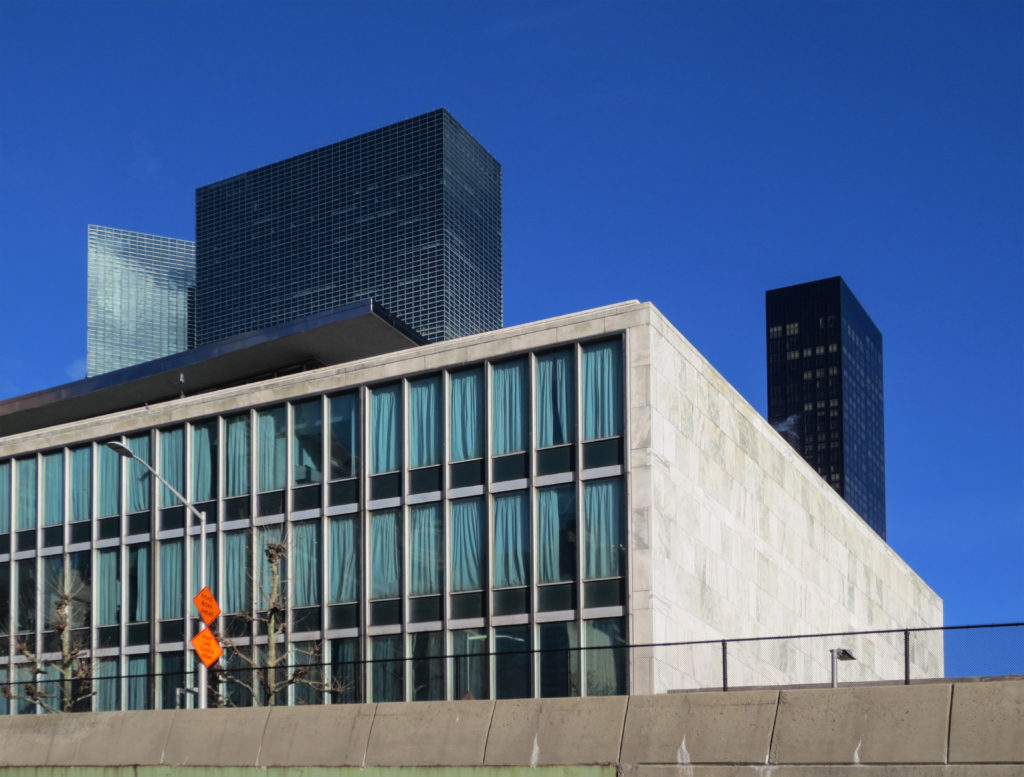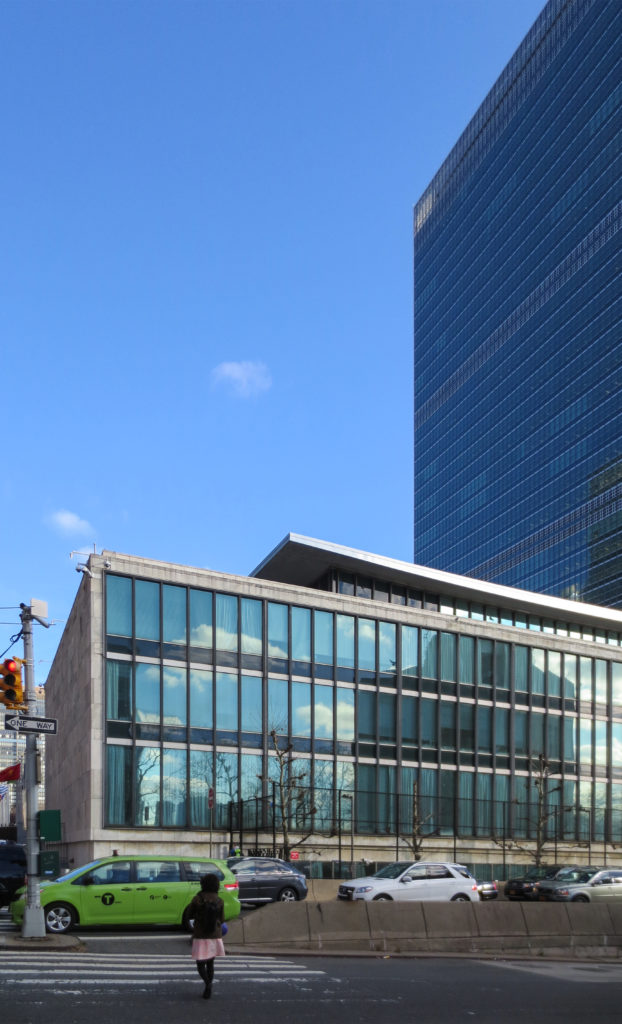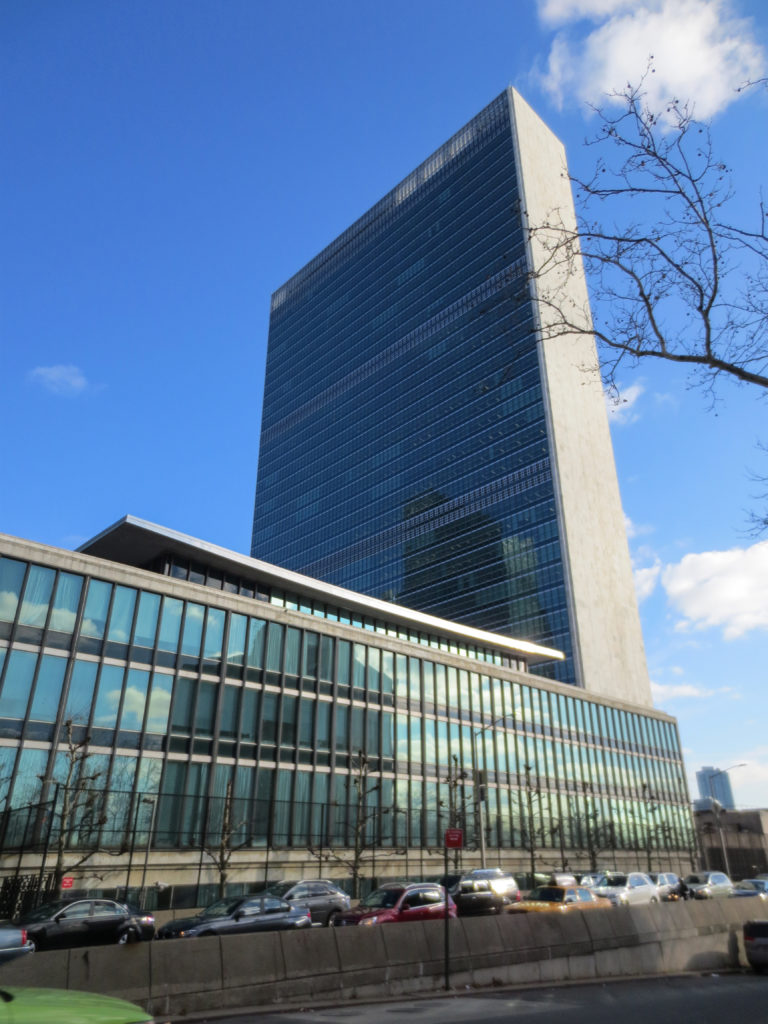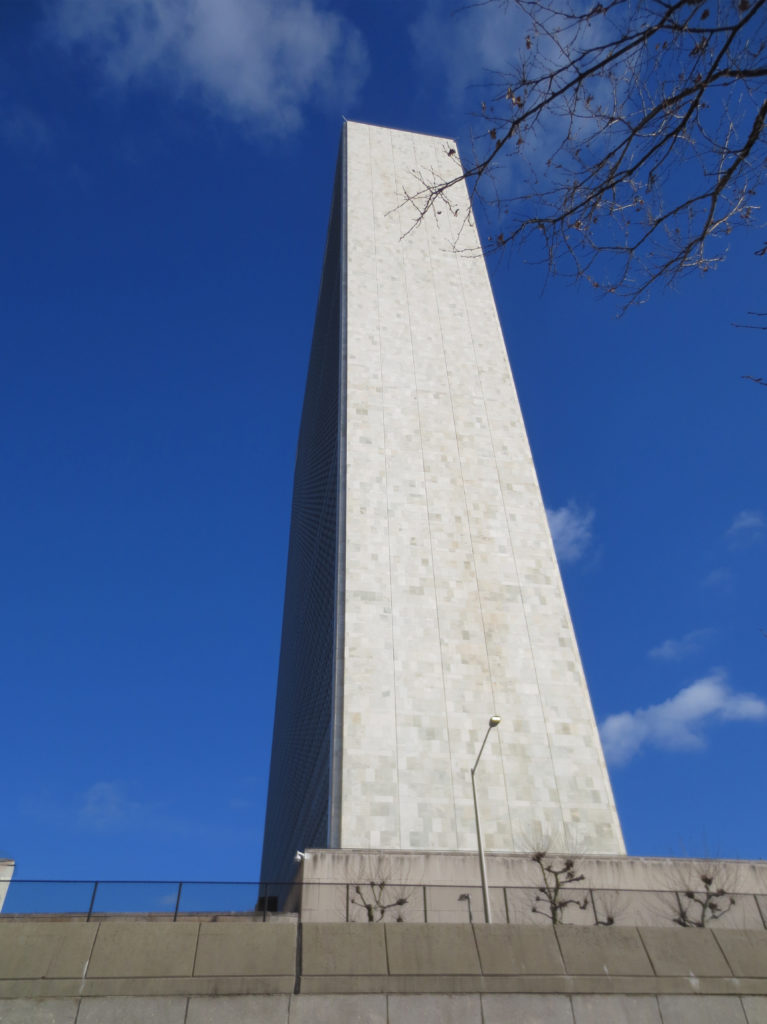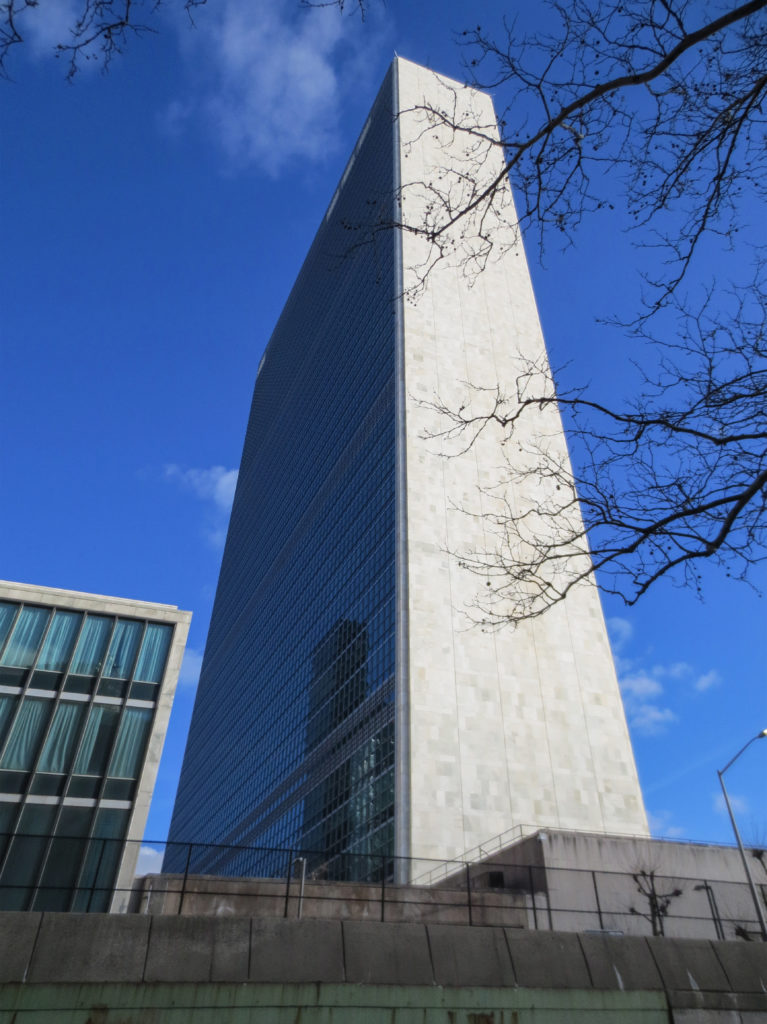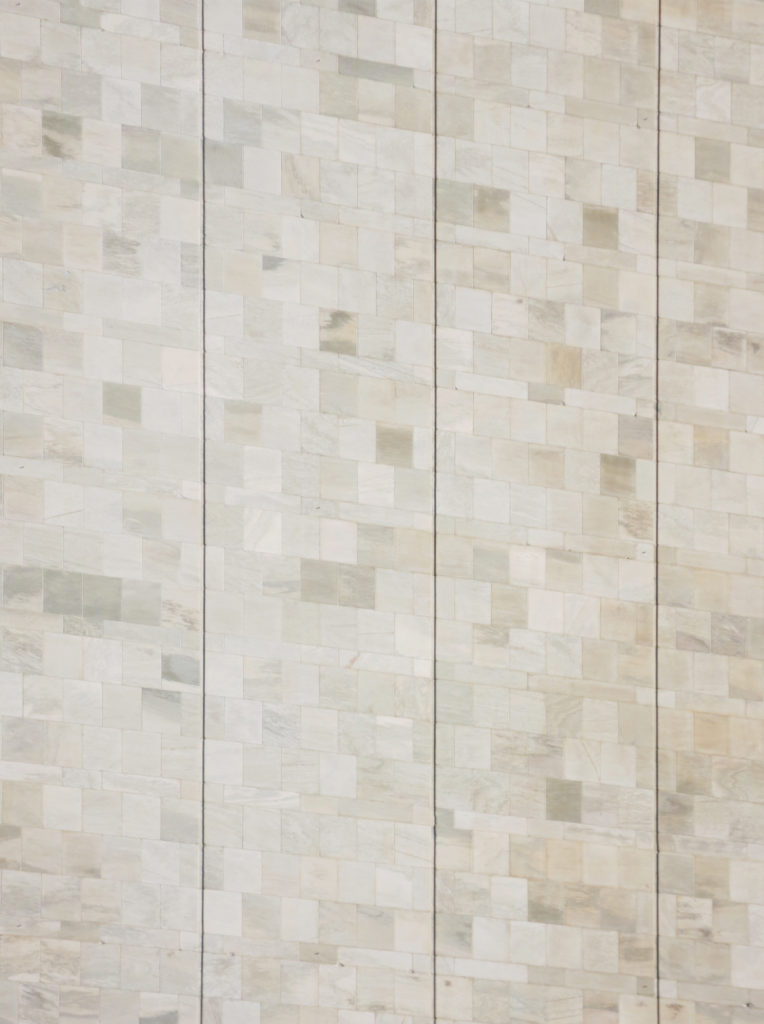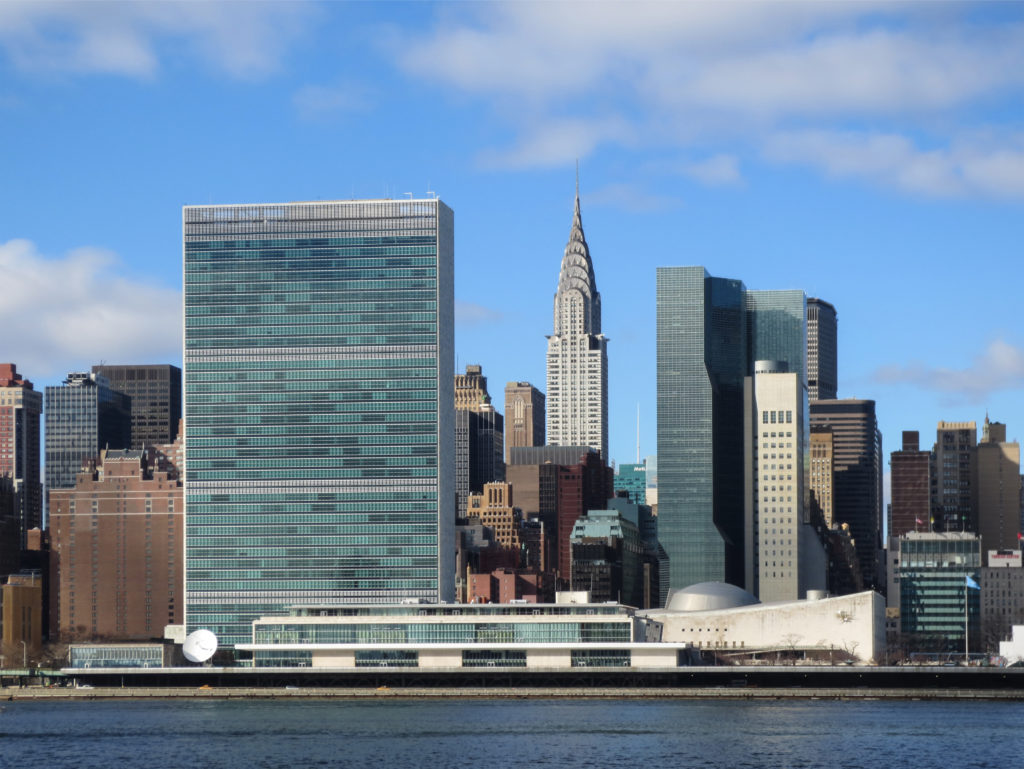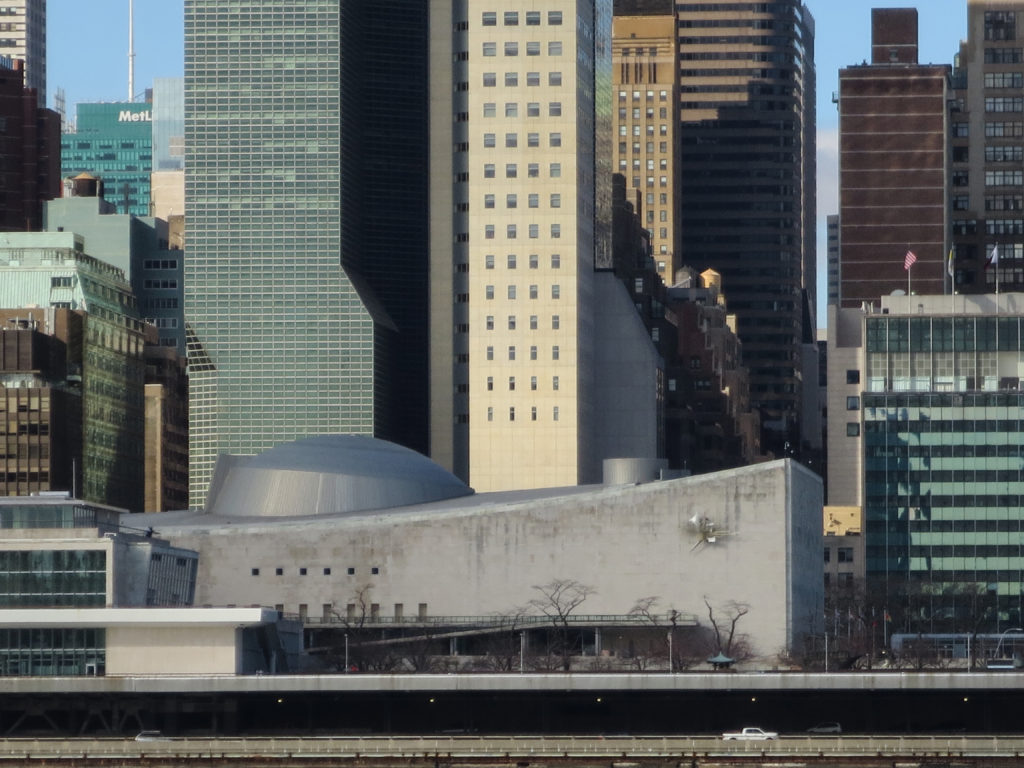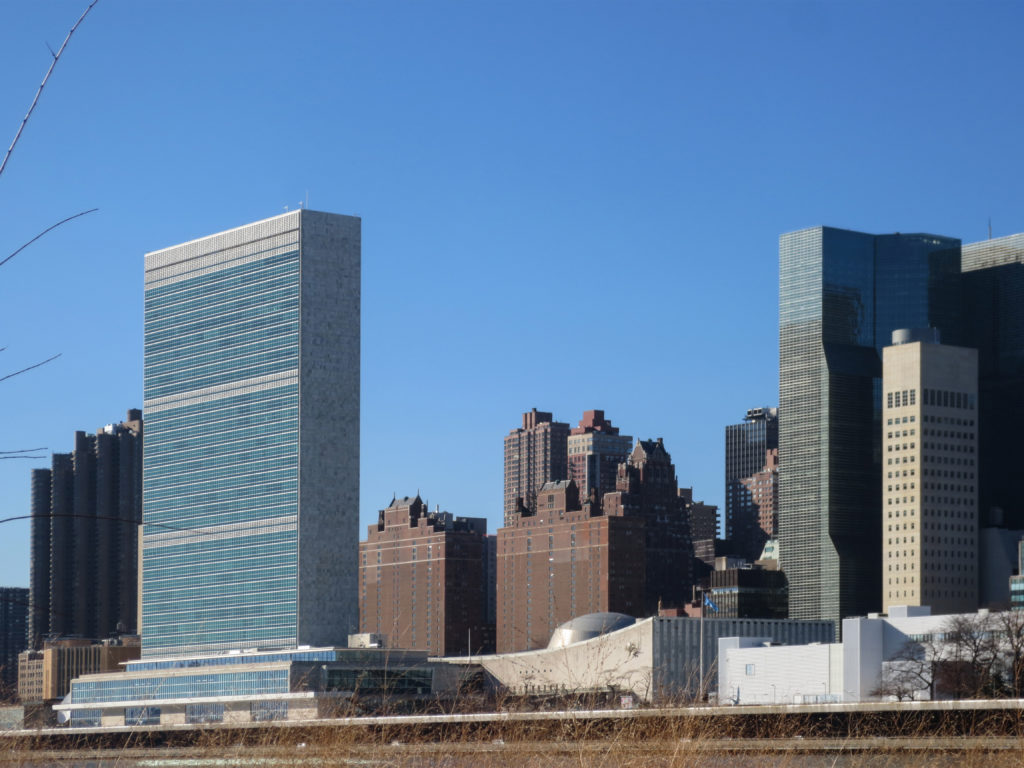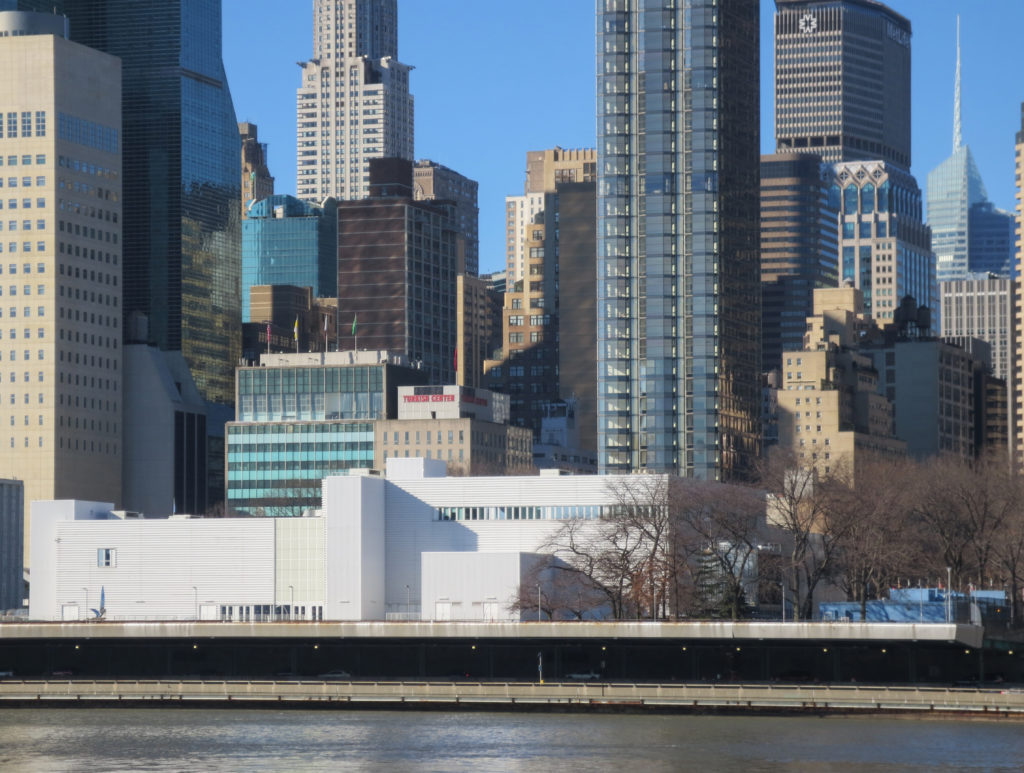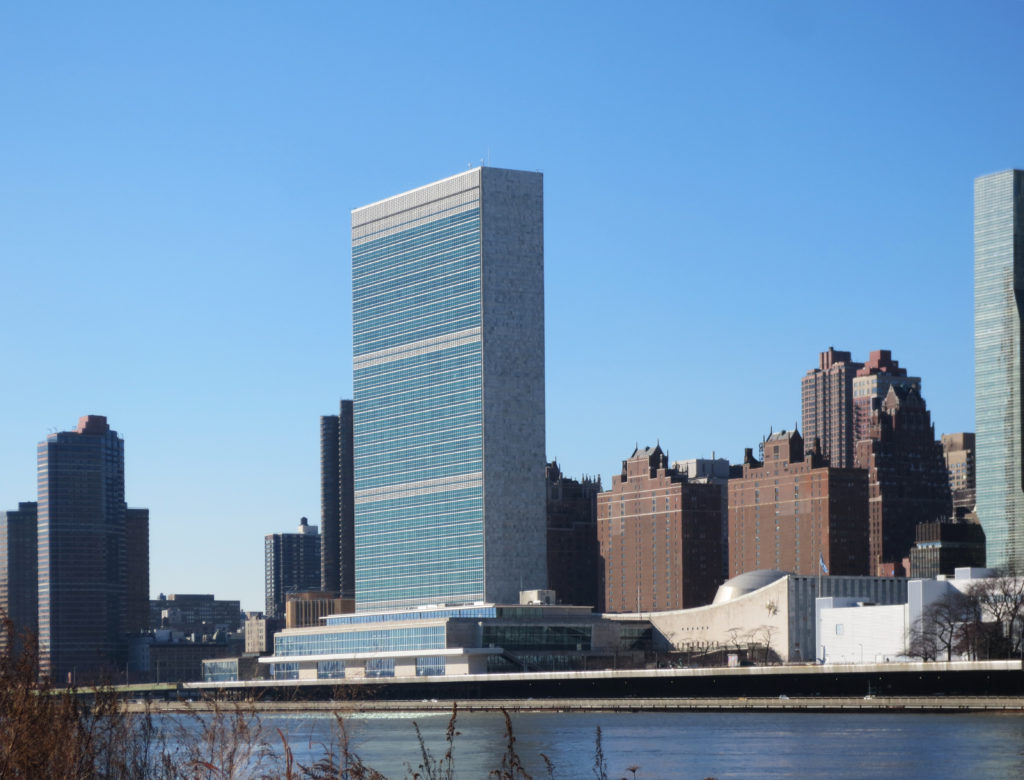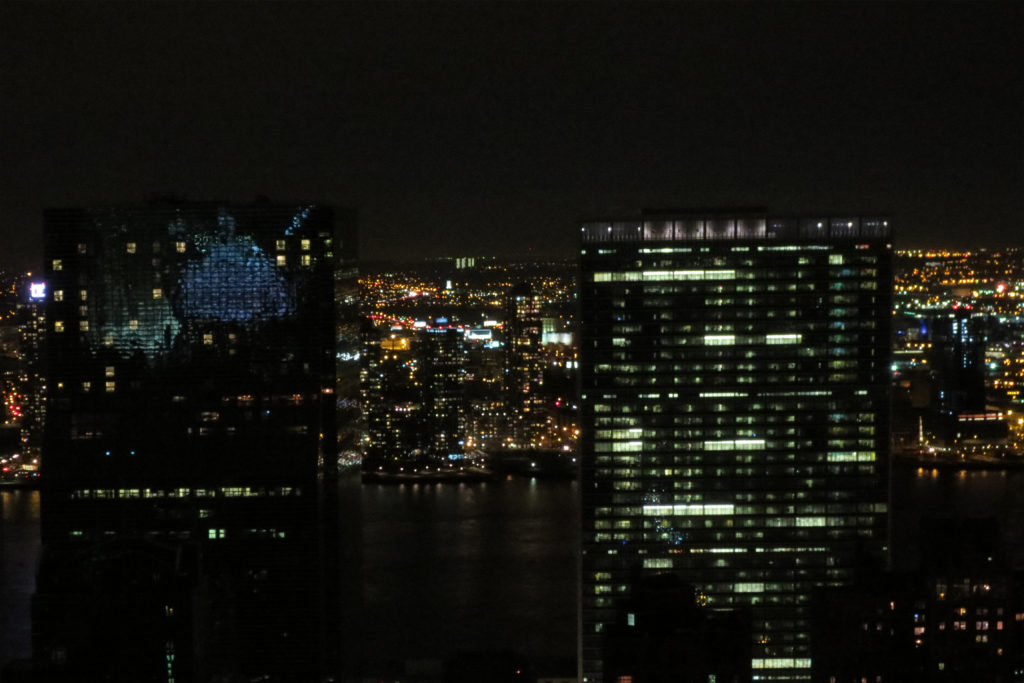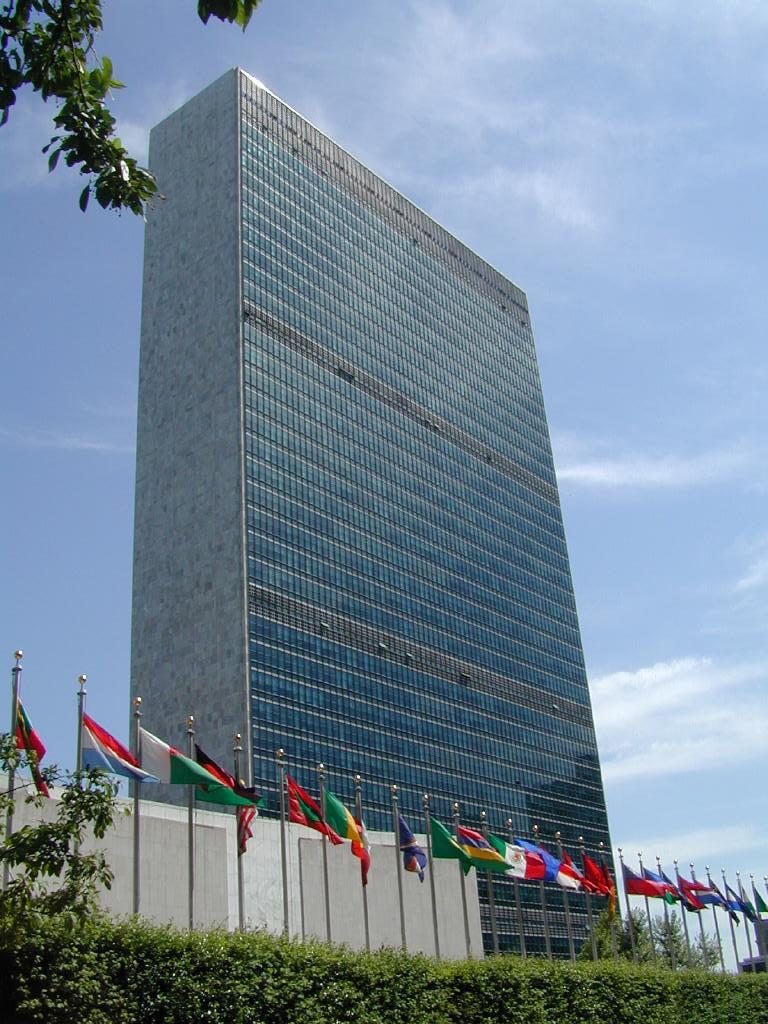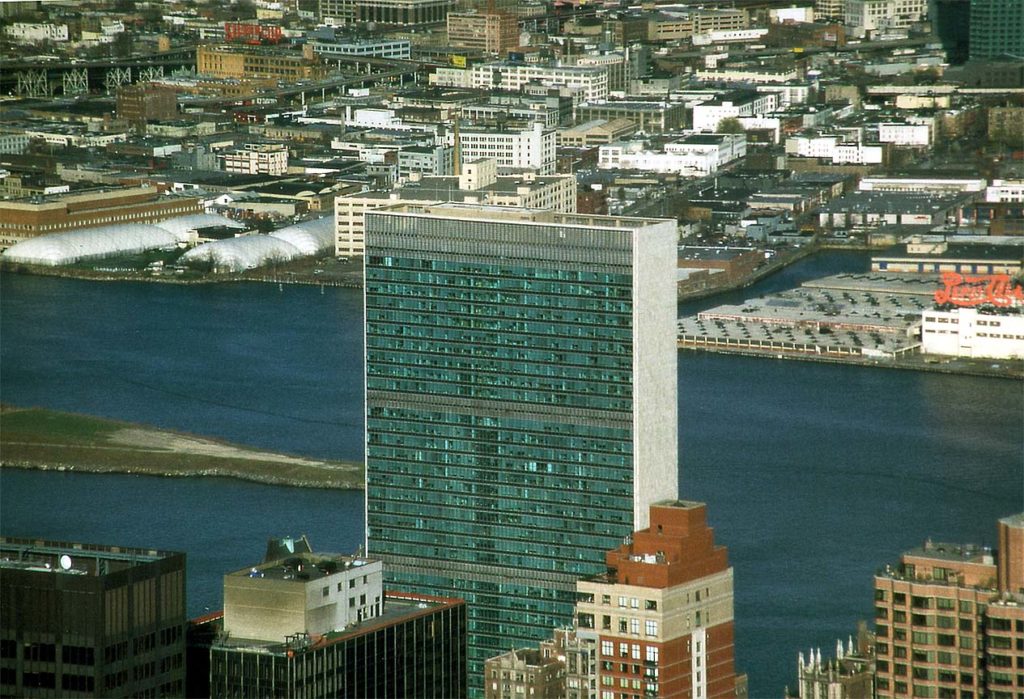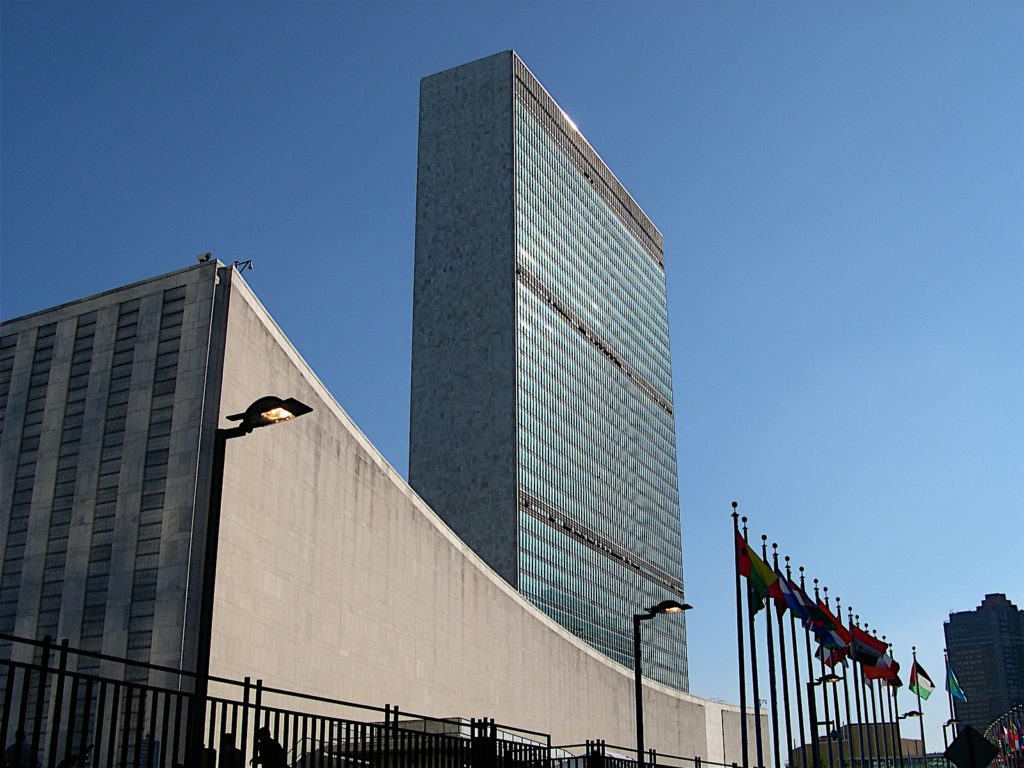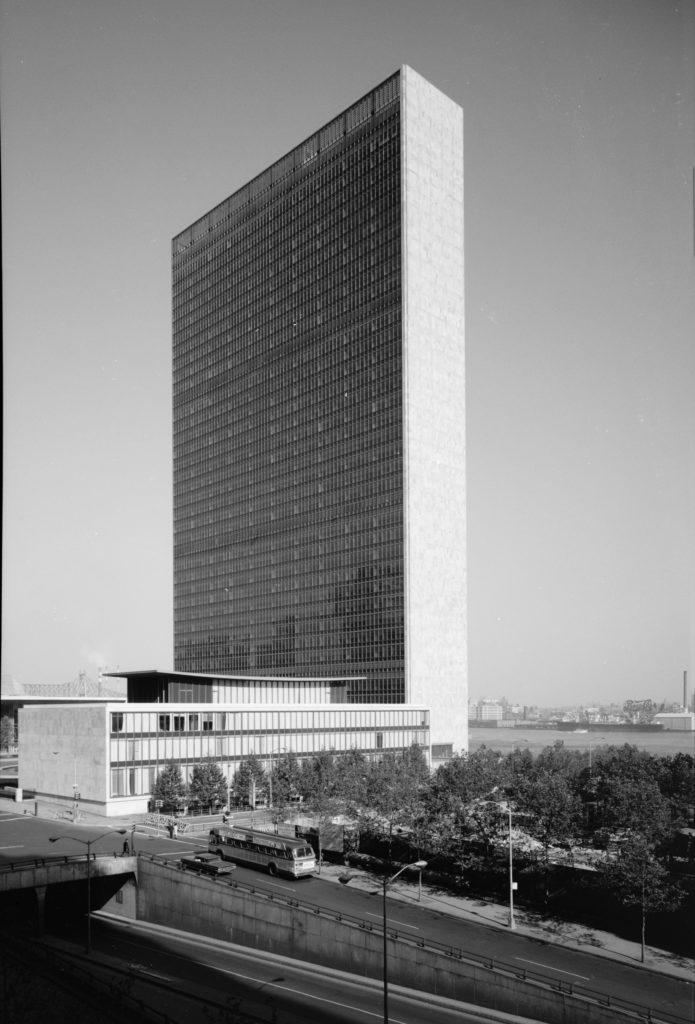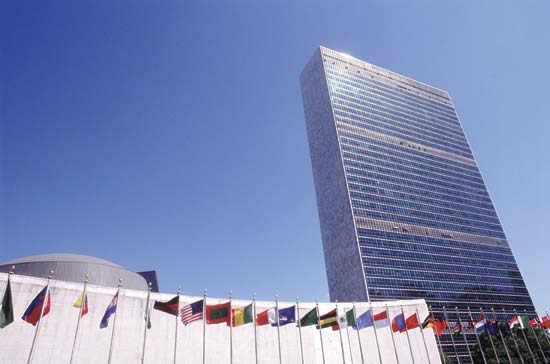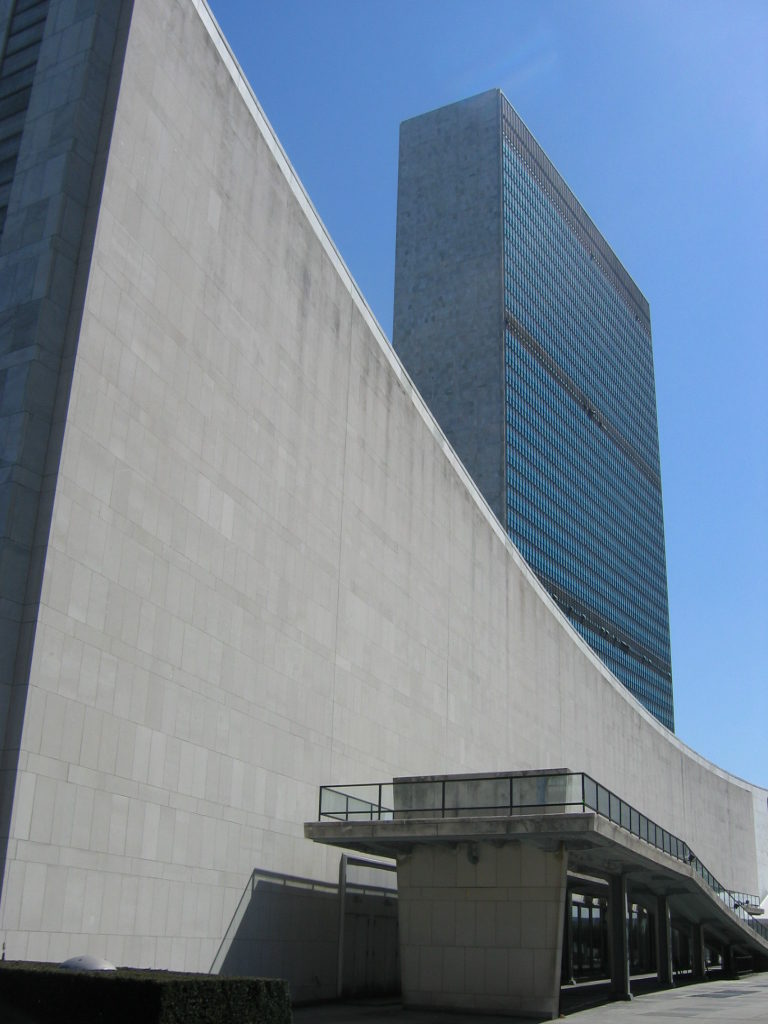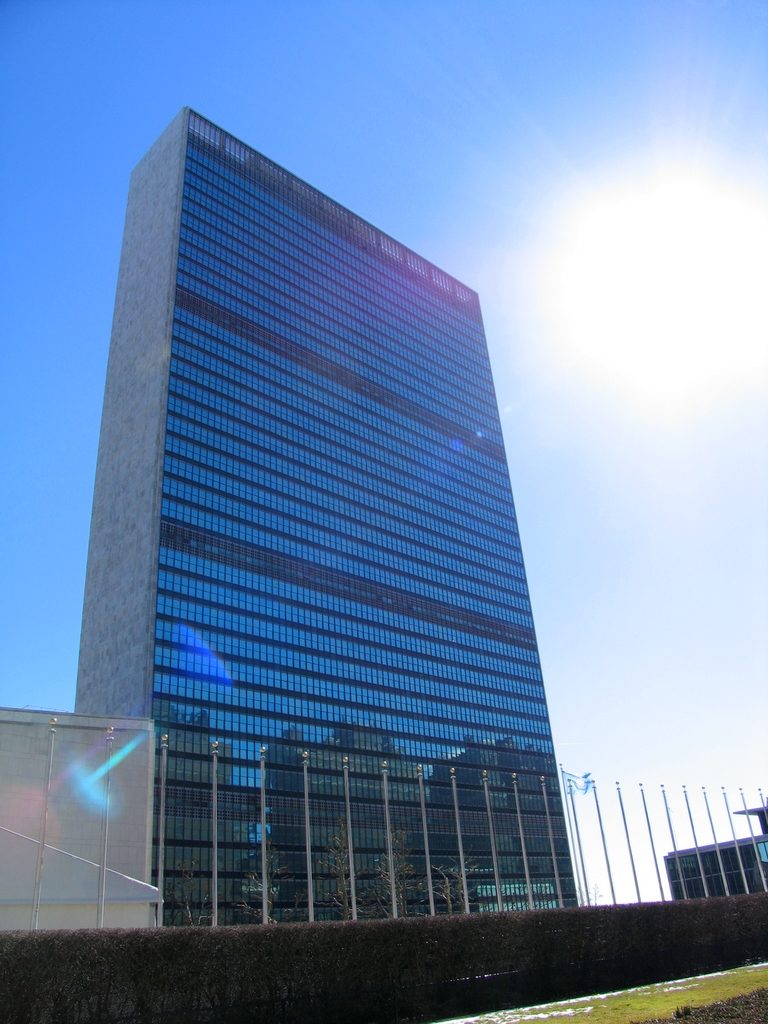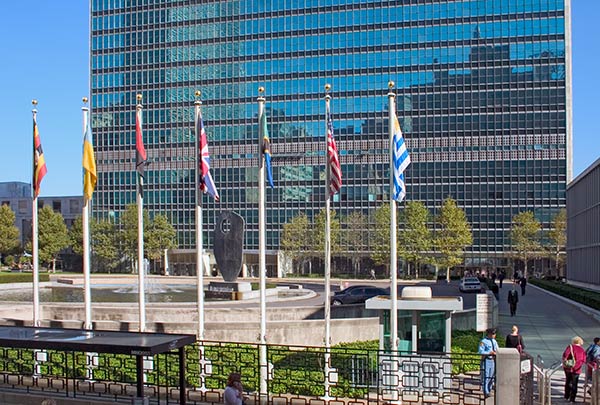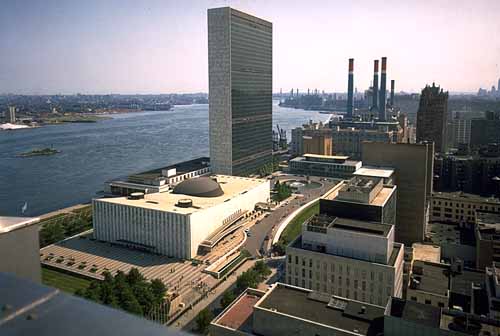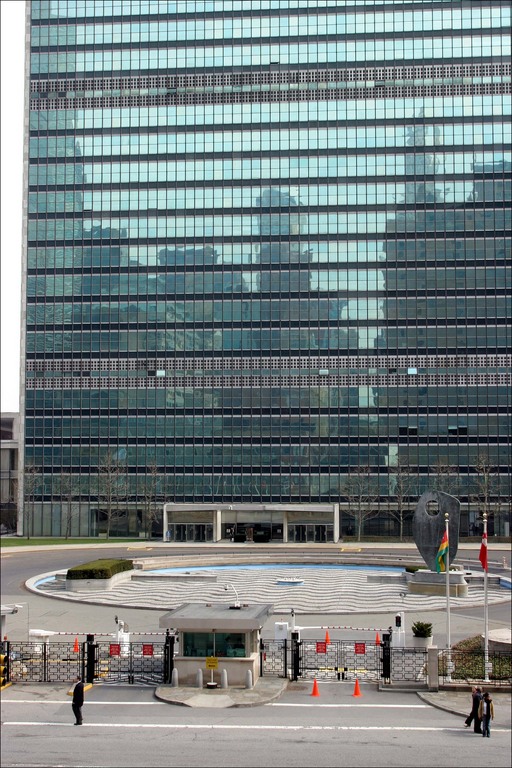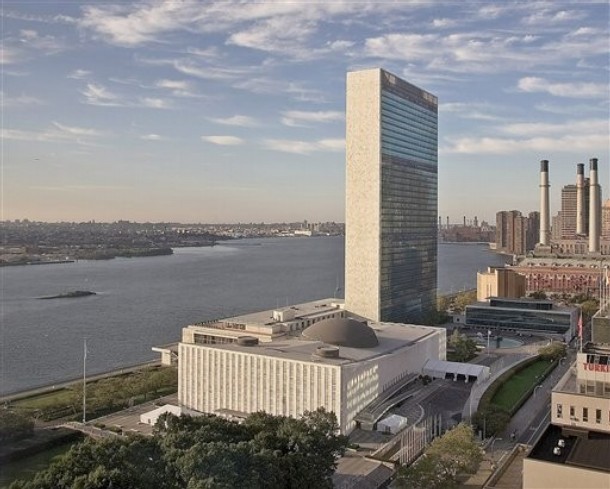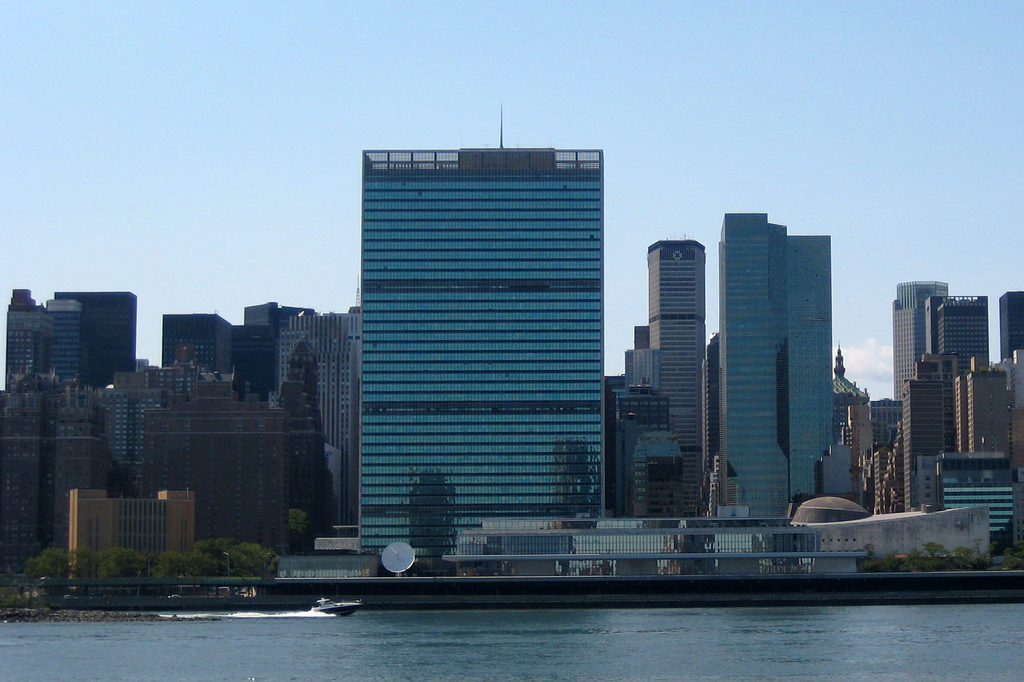United Nations Headquarters in New York

Introduction
The United Nations Headquarters in New York was built in between 1949 and 1950 near the East River, on 17 acres of land bought in New York to the principal builder of the time, William Zeckendorf, the purchase was ordered by Nelson Rockefeller, after the initial offer placed on the property of the Rockefeller family of Kykuit, rejected the view that it was too far from Manhattan. The eight and a half million dollars to purchase the land was financed by his father, John D. Rockefeller, Jr., who donated to the city. The principal architect of the complex was Wallace Harrison, the architect-consultant of the family.
The selection of the architect
Though normal for buildings of this size is convening an international competition this was not the case with the United Nations Headquarters.
The United Nations is an international organization as a unifying rather than entrusting the project to a single architect of a single country decided to form a committee comprising members of architects from different countries. This projection was more collaborative spirit of the institution.
American architect Wallace Harrison was named director of planning and the various government appointed advisory board members in design. The council was finally formed by N.A. Bassov of the Soviet Union, Gaston Brunfaut (Belgium), Ernest Cormier (Canada), Le Corbusier (France), Liang Ssu-cheng (China), Sven Markelius (Sweden), Oscar Niemeyer (Brazil), Howard Robertson (United Kingdom), GA Soilleux (Australia) and Julio Villamajo (Uruguay).
Each architect presented at least one proposal on which then work together to complete the outline. The committee reviewed more than 50 proposals before choosing the winner.
The idea of forming an international team of architects was more idyllic than realistic and more than a collaborative project was transformed into a great competition between the most renowned architects of the group.
Le Corbusier and Jeanneret in the lead from the beginning wanted to impose its design to the others. His international reputation will certainly gave them an advantage over other competitors.
Niemeyer was a disciple of Le Corbusier, who planted the French side presenting a project that was delighted to all members of the committee. Le Corbusier could not accept that it was his own disciple who snatch the project.
There appeared the left hand of Wallace Harrison, Le Corbusier convinced that the draft Niemeyer was merely an interpretation of its own project and that the result was neither more nor less than emulating the student’s teacher even years after being professionally independent. This idea seemed to calm the situation but the French continued to promote his project during the collaborative creation leading to finally say that the final draft is the “Scheme 23A, which was nothing but the project of Le Corbusier, but with the “modifications” of Niemeyer. A matter of vocabulary.
Situation
It is located in the vicinity of Turtle Bay in the eastern part of Midtown Manhattan. While in New York City, the territory occupied by the United Nations headquarters, is considered international territory, and its borders are the first avenue to the west, the Forty-Second Street to the south, the forty-eighth in the North and the East New York River to the east.
His exact address is the number 46, 1st Avenue.
Where could be
The UN headquarters in Manhattan was the decision after being subjected to a vote by members of the organization.
San Francisco, Chicago, Philadelphia, Flushing Meadows-Corona Park in Queens, and even the Black Hills of South Dakota were all proposed as possible locations for the headquarters of the United Nations before it was finally chosen Manhattan.
Complex
The complex includes a number of important buildings. While the Tower of the Secretariat is the predominant view of it, including the headquarters building of the dome of the General Assembly, the Dag Hammarskjöld Library and the Conference and Visitors Center, which sits between the Assembly building General and the skyscrapers of the Secretariat, and can only be seen from the road or the East River FDR. Just inside the perimeter fence of the complex stands a line of poles with flags of all 192 member states of the United Nations over the United Nations flag.
In addition to the 39 floors above ground level devoted to house the offices of various countries the complex has three underground floors of the tower reported that the secretary to the Conference building.
In these underground floors are also some shops, a fire-fighting equipment, platforms for receiving merchandise, security offices, warehouses, a three-level parking, a petrol station and the machine room that houses the air conditioning equipment.
Tower of the Secretariat
The Secretariat building with 39 floors 168 meters tall is the tallest building in the whole. Its east and west walls are entirely of aluminum and glass, while the North and South are of Vermont marble.
The interior spaces are not very developed and is intended to take up space. There is not a wide area and offices are rather small receiving sunlight for most of them large glass facades.
Aiming to continue building up the space even when the needs of occupation change offices were divided using mobile panels anchored to the structure that can easily be moved. The equipment and communications are under a floating floor with hatches every few meters.
General Assembly Building
The General Assembly building is a structure with sloping sides concave 115 x 49 m topped with a cupola that provides natural lighting inside the building.
The building opens to the north on a plaza leading to the main entrance of the complex to the public. Once in the great hall with large openings welcome glass translucent marble walls and positioned to give the impression of illumination of the cathedrals.
East and west walls are covered with limestone English, with some details in the marble covering the walls of the north and south tower of the secretary.
Finally the south facade is a large glass of 17 meters high that a glimpse through the square of his secretary.
Crossing the lobby to the right is a small meditation room with a large piece of metal ore in the center illuminated from above.
Hanging from the ceiling above the stairs and reaching the street level of a huge pendulum Foacault spatially connects the lobby to the second floor at the same time visually test the rotation of the earth. The pendulum was a gift from the Dutch government.
The lobby of the assembly hall decorated with shades of blue, green and gold took the second, third and fourth floor. Accessed from the main hall where representatives of different countries take place after the officers toward the center where a podium is high. The podium is occupied by the President of the General Assembly along with the secretary general of the United Nations and the secretary.
The assembly hall can accommodate 192 delegations with six seats per delegation. These seats are the 1321 floor of the room as well as three levels higher.
A balcony also houses 53 seats and 280 media to the public.
In two basement levels of the building is a large conference room with 623 seats in the area of the delegates, 44 to 166 for the press and the public. These are also found in basements four smaller conference rooms, studios for radio and television as well as the communications center of the complex.
For the public there is a library area with the UN official, Souvenirs shop and a cafeteria.
Building Conference
The conference building that connects the building with the general secretary of the tower measuring 120 meters long in an elongated.
The fourth level houses the dining room of delegates, private dining rooms, a cafeteria and kitchen workers.
In the second and third floor are placed three of the council chambers.
Materials
The walls are characteristic of the east-west tower of the secretariat were completely covered with insulating glass designed to absorb heat from sunlight. The north-south exterior walls were covered with marble from Vermont.
